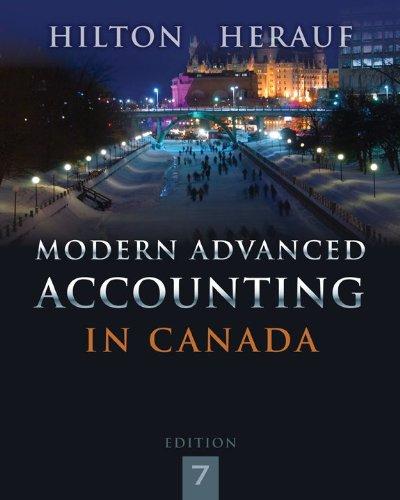On January 1, Year 1, Par Company purchased all the outstanding common shares of Bayshore Company, located
Question:
During Year 1, Bayshore earned US$20,000 in income and declared and paid US$8,000 in dividends on December 1, Year 1. Par uses the equity method to account for its investment in Bayshore’s Management has determined that the Canadian dollar is the recording functional and presentation currency for Par Company.
The exchange rates were as follows throughout the year:
Jan. 1, Year 1 ........ US$1 = CDN$0.99
Dec. 1, Year 1 ........ US$1 = CDN$0.96
Dec. 1, Year 1 ........ US$1 = CDN$0.95
Average for year ..... US$1 = CDN$0.97
Required:
(a) Assume that the Canadian dollar is the function currency for Bayshore Company.
(i) Prepare a schedule showing the differential allocation and amortization for Year 1. The schedule should present both Canadian dollars and U.S. dollars.
(ii) Prepare Par Company’s journal entry for adjustments pertaining to the amortization of the acquisition differential for Year 1.
(b) Assume that the U.S. dollar is the functional currency for Bayshore Company.
(i) Prepare a schedule showing the differential allocation and amortization for Year 1. The schedule should present both Canadian dollars and U.S. dollars.
(ii) Prepare Par Company’s journal entry for adjustments pertaining to the amortization of the acquisition differential for Year 1.
Salvage Value
Salvage value is the estimated book value of an asset after depreciation is complete, based on what a company expects to receive in exchange for the asset at the end of its useful life. As such, an asset’s estimated salvage value is an important...
Fantastic news! We've Found the answer you've been seeking!
Step by Step Answer:
Related Book For 

Modern Advanced Accounting In Canada
ISBN: 9781259066481
7th Edition
Authors: Hilton Murray, Herauf Darrell
Question Posted:





